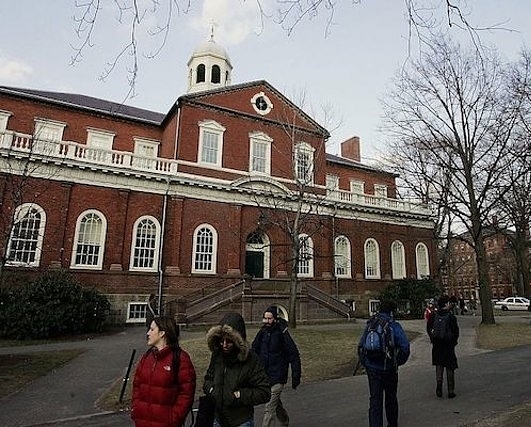World
Pumping More Subsidies Into Education Will, Predictably, Result In Student Debt
- Subsidies in higher education build bureaucratic empires with ever-larger numbers of administrators— while money devoted to the classroom shrinks.

Getty Images
Normally, leftists get upset if there’s a big industry that charges high prices, engages in lots of featherbedding, and manipulates the political system for handouts.
But, for some reason, when the industry is higher education, folks like Hillary Clinton think the answer is to shower colleges and universities with ever-greater subsidies.
She says the subsidies are for students but I point out— in this interview— that the real beneficiaries are the schools that simply boost tuition and fees to capture any increase in student loans.
And I also pointed out that the colleges and universities don’t even use the money wisely.
Instead, they build bureaucratic empires with ever-larger numbers of administrators while money devoted to the classroom shrinks.
Sort of a pay-more-get-less business model.
Though that only works when there are government subsidies to enable the inefficiency and bloat.
But don’t take my word for it. According to a study published by the National Bureau of Economic Research (h/t: James Pethokoukis), tuition subsidies get captured by colleges and universities.
By the way, I closed the above interview by stating that I want to make colleges and universities at least partially liable if students don’t pay back their loans because that will create a better incentive structure.
Pay More, Get Less
Two scholars from the American Enterprise Institute addressed this issue in an article for National Review.
The authors point out that default and delinquency are very common, but they point out that this is merely a symptom of a system with screwed-up incentives.
It’s not just whether they have an incentive to control costs. The current approach gives them carte blanche to waste money and jack up tuition and fees.
Amen. This is what I mean by the “pay-more-get-less” business model.
A Simple Solution
The solution, of course, it to make fat and lazy college administrators have to worry that their budgets will shrink if they continue to jack up tuition while providing sub-par education.
The bottom line is that bad things happen when the visible foot of the government supplants the invisible hand of the market.
That’s what I basically was trying to say in the interview when I made the crack about a reverse Midas touch whenever there is government intervention.
The solution, of course, is to phase out the subsidies that have created the problem.
But (just as is the case with healthcare) that’s a challenge because of the inefficiency that is now built into the system. Consumers will be worried that tuition and fees will remain high, which will mean higher out-of-pockets costs for college.
So while I understand why politicians will be reluctant to address the issue, the longer they wait, the worse the problem will become.
P.S. This video from Learn Liberty, featuring Professor Daniel Lin, is a great (albeit depressing) introduction to the issue of how government handouts lead to higher tuition.
P.P.S. Is there a “bubble” in higher education? While government intervention and handouts definitely have enabled needlessly high tuition, I’ve explained that those high prices will probably be permanent so long as the subsidies continue.
P.P.P.S. Unsurprisingly, Paul Krugman doesn’t understand the issue.
This piece was published on The Foundation For Economic Education and has been republished here with permission.
Introducing ElectionsHQ + 50 Ground Reports Project
The 2024 elections might seem easy to guess, but there are some important questions that shouldn't be missed.
Do freebies still sway voters? Do people prioritise infrastructure when voting? How will Punjab vote?
The answers to these questions provide great insights into where we, as a country, are headed in the years to come.
Swarajya is starting a project with an aim to do 50 solid ground stories and a smart commentary service on WhatsApp, a one-of-a-kind. We'd love your support during this election season.
Click below to contribute.
Latest